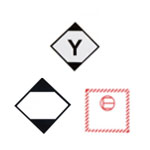Lithium Battery Packaging
When it comes to shipping lithium batteries internationally, it is important to comply with the regulations set by regulatory authorities such as the International Civil Aviation Organization (ICAO), the International Air Transport Association (IATA), the agreement concerning the International Carriage of Dangerous Goods by Road (ADR) and the International Maritime Dangerous Goods code (IMDG). These regulations aim to ensure the safe transportation of lithium batteries and minimize the risks associated with their shipment.
The regulations surrounding the transportation of lithium batteries depend on various factors, including the type of battery, its capacity, and whether it is shipped alone, packed with, or installed in a device. For example, via air, lithium metal and lithium-ion batteries are prohibited from being shipped as standalone items on passenger aircraft although they can be shipped on cargo aircrafts when packed in accordance with Packing Instruction 965. While lithium metal and ion batteries contained in or packed with equipment are allowed via air subject to restrictions including weight and watt-hours. It is crucial to consult the specific mode of transport regulations including any Special Provisions and State and Operator variations that may exist.
For more information on lithium battery packaging regulations, check out our beginner’s guide for lithium battery dangerous goods.
Alternatively contact us for advice on the correct packaging for your Lithium Batteries
 UK
UK

















































